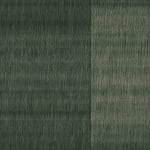2025
1 - 5 February 2025 | Bonhams, 101 New Bond Street, London
Open a larger version of the following image in a popup:
 Portrait courtesy the artist
Portrait courtesy the artist
 Portrait courtesy the artist
Portrait courtesy the artist
Emily Edelman
Carfax, 2025
Copyright The Artist
Emily Edelman is an artist exploring the intricacies of text, typography, scale, and colour theory through innovative generative algorithms and material practices. Her work examines the thin line between legibility...
Emily Edelman is an artist exploring the intricacies of text, typography, scale, and colour theory through innovative generative algorithms and material practices. Her work examines the thin line between legibility and abstraction within the rich and timeless realm of language documented visually.With a classically trained eye and taste for quiet complexity, Edelman draws on her degree in graphic design from the Rhode Island School of Design as well as a decade-long career in spatial design. Her work has been exhibited internationally, with notable pieces including Asemica (2021) on Art Blocks Curated and Reverie (2023), shown with Verse Works and Tender Art at Untitled Art Fair in Miami.
In her new algorithmic series, Carfax, the artist’s handwriting is transformed from something legible into a dense, fervent texture. Each piece begins with traced and coded handwritten characters that are stretched, warped, and layered until they transcend communication, becoming a visual manifestation of raw human expression across time. Like palimpsests of ancient manuscripts, where layers of text fade into ghosted impressions, this series explores the intersection of personal mark-making and universal human gesture. The algorithmic manipulation creates a paradox: as the text dissolves from order into abstraction, it becomes more deeply expressive of our shared human tensions–– beautiful and violent, structured and chaotic, intensely personal yet universally felt. Generated digitally, with one output translated physically via mechanical plotting, this series exists in a liminal space between human and machine, between meaning and pure visual emotion, and between the ancient art of writing and its contemporary technological evolution.
In her new algorithmic series, Carfax, the artist’s handwriting is transformed from something legible into a dense, fervent texture. Each piece begins with traced and coded handwritten characters that are stretched, warped, and layered until they transcend communication, becoming a visual manifestation of raw human expression across time. Like palimpsests of ancient manuscripts, where layers of text fade into ghosted impressions, this series explores the intersection of personal mark-making and universal human gesture. The algorithmic manipulation creates a paradox: as the text dissolves from order into abstraction, it becomes more deeply expressive of our shared human tensions–– beautiful and violent, structured and chaotic, intensely personal yet universally felt. Generated digitally, with one output translated physically via mechanical plotting, this series exists in a liminal space between human and machine, between meaning and pure visual emotion, and between the ancient art of writing and its contemporary technological evolution.


